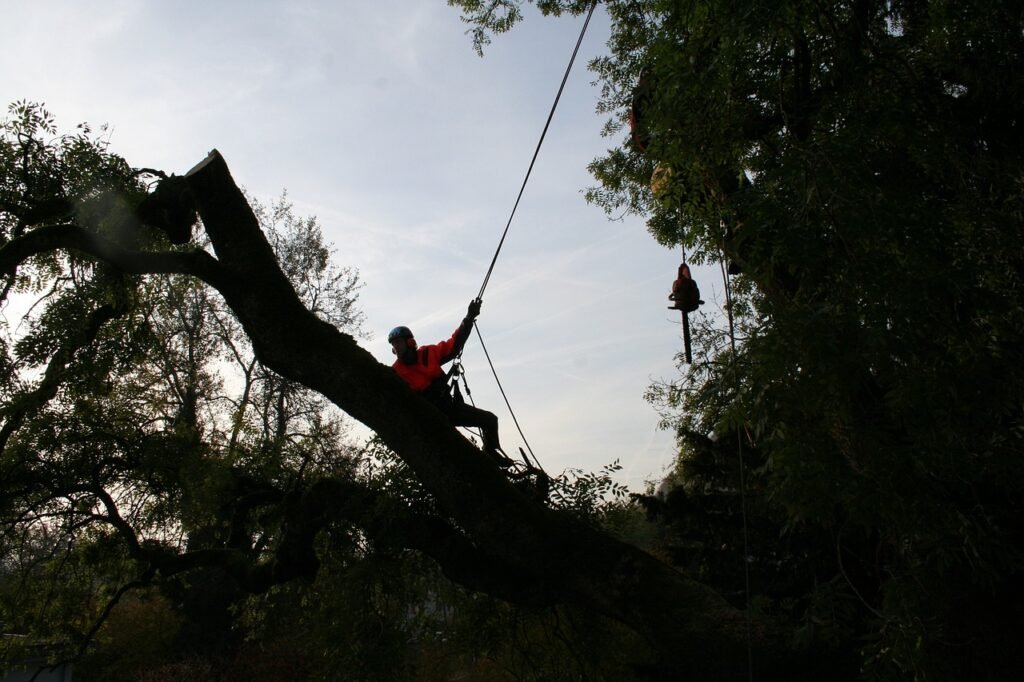Trees are invaluable assets to our environment, providing shade, oxygen, and beauty to our surroundings. However, like all living organisms, trees are susceptible to a variety of problems that can threaten their health and vitality. From pests and diseases to environmental stressors, trees face numerous challenges that require expert attention. In this article, we’ll explore some of the most common tree problems and discuss how arborists play a vital role in diagnosing and addressing these issues.

Pest Infestations
One of the most common problems trees encounter is pest infestations. Insects such as aphids, scales, borers, and caterpillars can wreak havoc on a tree’s foliage, causing wilting, discoloration, and even defoliation. Arborists are trained to identify the signs of pest infestations and determine the most appropriate course of action to mitigate the damage. This may involve the application of insecticides, the introduction of beneficial insects, or implementing cultural practices to reduce pest populations.
Diseases
Trees are also susceptible to a wide range of diseases caused by fungi, bacteria, and viruses. Common tree diseases include powdery mildew, root rot, anthracnose, and Dutch elm disease, among others. Arborists are skilled in diagnosing tree diseases based on symptoms such as leaf spots, cankers, and dieback. They can recommend treatments such as fungicides, pruning infected branches, or improving soil drainage to help trees recover from disease.
Poor Soil Conditions
Healthy soil is essential for the growth and development of trees, but many urban environments suffer from soil compaction, poor drainage, and nutrient deficiencies. Arborists can assess soil conditions and recommend appropriate soil amendments to improve tree health. This may include aerating compacted soil, adding organic matter, or adjusting pH levels to create a more hospitable environment for tree roots.
Structural Issues
Trees with structural problems such as weak limbs, codominant stems, or root defects pose a safety risk to property and people. Arborists are trained to identify structural issues during tree inspections and can recommend corrective measures to reduce the risk of failure. This may involve pruning to remove hazardous branches, installing support systems such as cables and braces, or even tree removal in extreme cases where the tree cannot be safely preserved.
Environmental Stress
Trees can experience stress due to factors such as drought, extreme temperatures, air pollution, and soil compaction. Arborists can help alleviate environmental stressors by implementing measures such as supplemental watering, mulching, and proper pruning techniques. They can also recommend tree species that are better adapted to local environmental conditions to ensure long-term health and resilience.
Construction Damage
Construction activities can have a significant impact on nearby trees, leading to root damage, soil compaction, and mechanical injury to branches and trunks. Arborists can assess the potential impact of construction projects on trees and develop strategies to minimize damage. This may involve implementing protective barriers, root pruning, or relocating trees to safer locations.
Invasive Species
Invasive plants and pests pose a growing threat to tree health and biodiversity. Arborists play a crucial role in identifying and managing invasive species to prevent their spread and protect native ecosystems. This may involve removing invasive plants, treating affected trees with pesticides, or implementing biocontrol methods to suppress pest populations.
In conclusion, trees face a myriad of challenges that can impact their health and longevity. Arborists are trained professionals who specialize in the care and management of trees, and they play a vital role in diagnosing and addressing common tree problems. Whether it’s pest infestations, diseases, poor soil conditions, structural issues, environmental stress, construction damage, or invasive species, arborists have the expertise and tools to help trees thrive in urban and natural landscapes. By consulting with arborists and implementing their recommendations, property owners can ensure the health and beauty of their trees for generations to come.